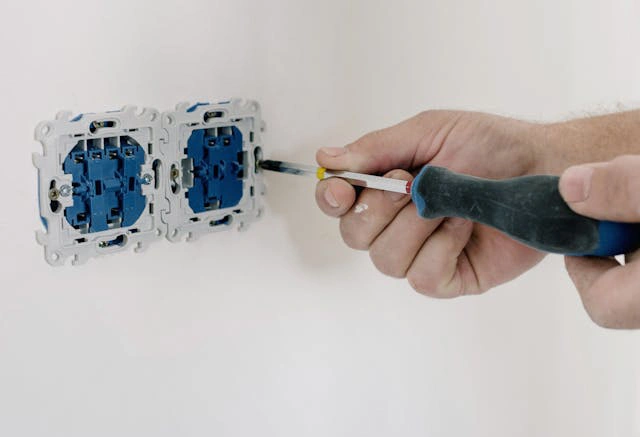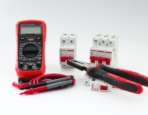GFCI stands for Ground Fault Circuit Interrupter. These GFCI outlets continuously monitor electrical current for imbalances. When an imbalance, called a ground fault, occurs, it can indicate a potentially dangerous situation – electricity escaping its intended path. This might be caused by damaged appliances, frayed cords, or even water coming into contact with live wires.
Here’s where installing GFCI outlets can become lifesaving. If they detect a ground fault, they react swiftly, shutting off power within a fraction of a second. This rapid response can prevent severe electrical shock or even death.
Electrical safety is a cornerstone of our service at Red Ryno. One of the most common questions we receive concerns GFCI outlets. These essential safety devices can prevent serious electrical hazards in your home. Let’s delve into what GFCI outlets are, why they’re so important, and where they’re typically found in a home.
GFCI – Ground Fault Circuit Interrupter
In simpler terms, it’s a special type of outlet that’s designed to detect imbalances in electrical current. This imbalance, called a ground fault, can happen when electricity escapes its intended path and travels somewhere else unintentionally. This could be due to a damaged appliance, frayed cord, or even water making contact with live wires.
Here’s where the GFCI’s magic comes in. If it detects a ground fault, the GFCI shuts off the power extremely quickly – within a fraction of a second. This rapid response can prevent serious electrical shock or even death.
Why are GFCI outlets so important?
Because even a mild electrical shock can be dangerous, with effects ranging from tingling and muscle spasms to disruptions in heart rhythm. Children and individuals with existing health conditions are especially vulnerable. More importantly, ground faults can cause electrical fires. These fires can ignite undetected within walls or behind appliances, posing a significant risk to your property and loved ones. GFCI outlets provide a crucial layer of protection in these situations, preventing electrical flow in the event of a fault and stopping potential fires before they start.
So, where should you have GFCI outlets installed?
They’re most important in areas with a high moisture content, such as kitchens, bathrooms, laundry rooms, and garages. In these areas, electrical appliances and water are more likely to come into contact, creating a potential hazard. For instance, using a hairdryer near a sink in a bathroom or running a power tool in a damp basement could introduce risk. GFCI outlets offer peace of mind by automatically shutting off power if a current leak is detected due to moisture exposure, significantly reducing the chance of electrical shock or fire.
Not sure if your outlets are GFCI protected?
Look for outlets with “Test” and “Reset” buttons on the faceplate. If you’re unsure or want to discuss GFCI installation in your home, contact a licensed electrician like Red Ryno. We can ensure your home is equipped with the proper safety measures to keep your family protected.
Remember, electrical safety is no small matter. By understanding GFCI outlets and their importance, you’re taking a crucial step towards a safer and more secure home. Don’t hesitate to reach out to us with any questions – we’re here to help!



